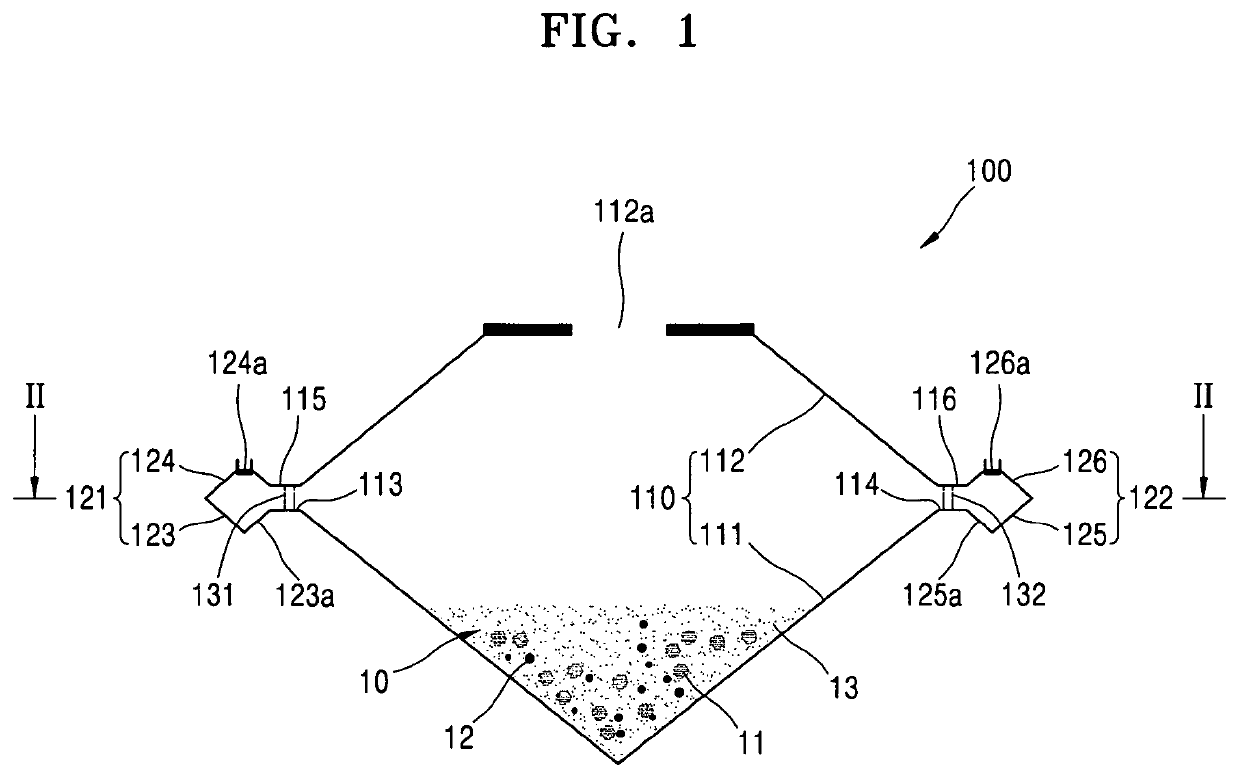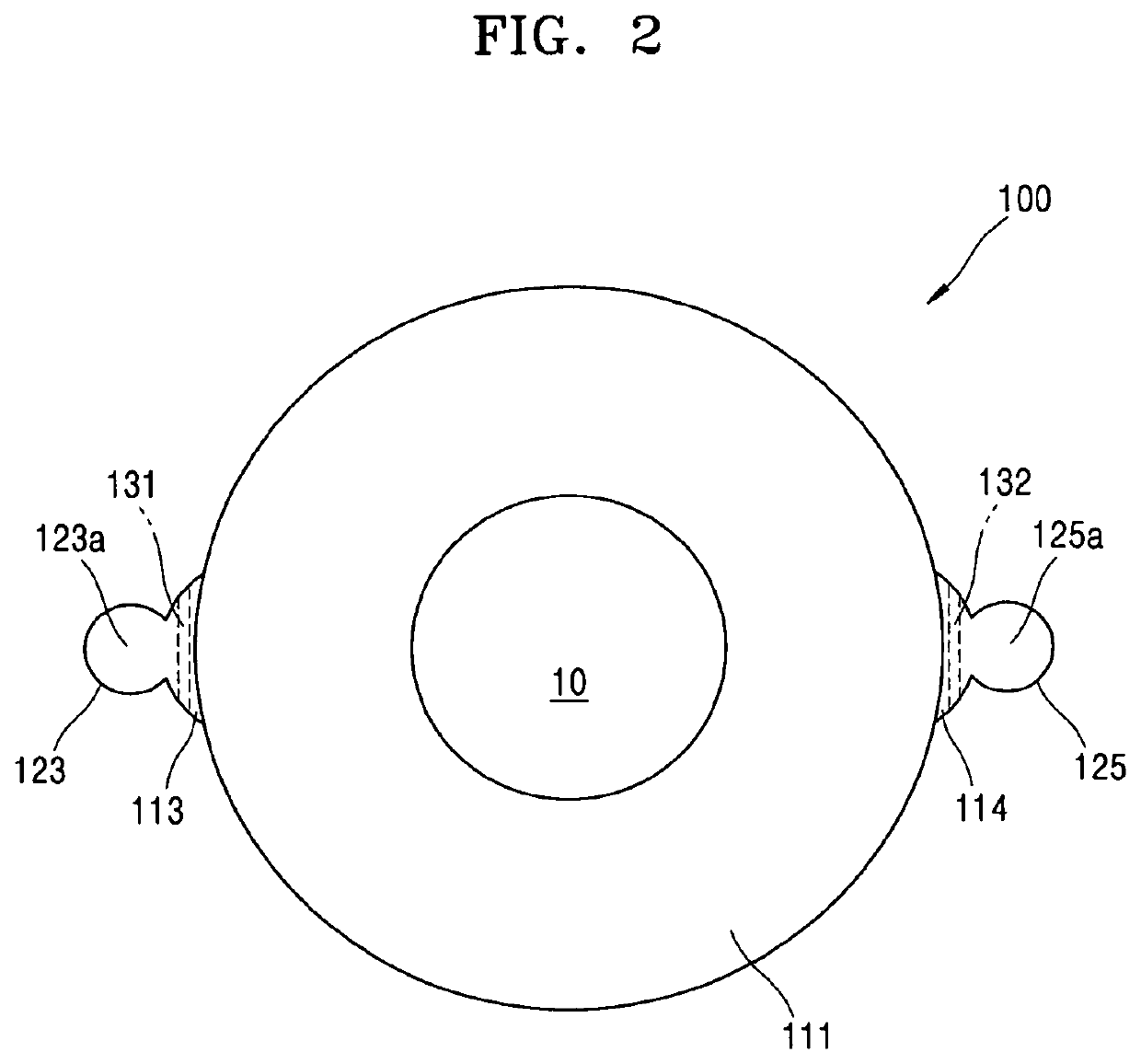Centrifuge and centrifugation method
a centrifugation method and centrifuge technology, applied in centrifuges, fluid controllers, membrane technology, etc., can solve the problems of inability to secure the purity of separated materials, difficulty in separating materials, so as to achieve easy separation from the substance
- Summary
- Abstract
- Description
- Claims
- Application Information
AI Technical Summary
Benefits of technology
Problems solved by technology
Method used
Image
Examples
embodiment 1
[0034]As illustrated in FIG. 1, in the present embodiment, a centrifuge 100 includes a rotary chamber 110, a first storage unit 121, a second storage unit 122, a first filter 131, and a second filter 132.
[0035]The rotary chamber 110 may contain a substance 10 therein and rotates so that centrifugal force acts on the contained substance 10. Thus, the substance 10 may be separated by components. The substance 10 contained in the rotary chamber 10 and being subject to centrifugation may be a complex fluid such as blood. In general, the complex fluid contains other components in addition to a component sought to be separated. For example, the substance 10 contained in the rotary chamber 10 and being subject to centrifugation may include: a component 11 sought to be separated; a component 12 that has a solid phase and particles having a greater mean radius than the component 11 sought to be separated; and a component 13 that has a solid or liquid phase and particles having a smaller mean...
embodiment 2
[0087]As illustrated in FIG. 10, the present embodiment relates to a centrifugation method 200. The centrifugation method 200 includes operation 210 in which a rotary chamber, which contains a substance to be centrifuged, rotates so that centrifugal force acts on the substance to be centrifuged. When the substance is injected into the rotary chamber, the substance may be injected by opening a cover of an inlet of the rotary chamber or using an injection pipe connected to the inlet.
[0088]Then, in operation 220, by passing the substance in the rotary chamber through a filter by increasing the centrifugal force according to the rotation of the rotary chamber, a certain component and a component having a smaller size than the certain component are separated from the substance in the rotary chamber and stored in a storage unit.
[0089]When the centrifugal force according to the rotation of the rotary chamber is applied, the substance in the rotary chamber moves upwards along an inclined in...
PUM
| Property | Measurement | Unit |
|---|---|---|
| size | aaaaa | aaaaa |
| size | aaaaa | aaaaa |
| specific gravity | aaaaa | aaaaa |
Abstract
Description
Claims
Application Information
 Login to View More
Login to View More - R&D
- Intellectual Property
- Life Sciences
- Materials
- Tech Scout
- Unparalleled Data Quality
- Higher Quality Content
- 60% Fewer Hallucinations
Browse by: Latest US Patents, China's latest patents, Technical Efficacy Thesaurus, Application Domain, Technology Topic, Popular Technical Reports.
© 2025 PatSnap. All rights reserved.Legal|Privacy policy|Modern Slavery Act Transparency Statement|Sitemap|About US| Contact US: help@patsnap.com



